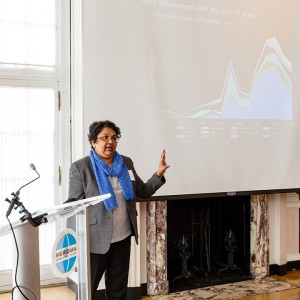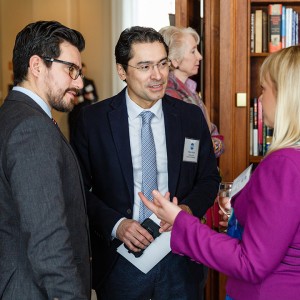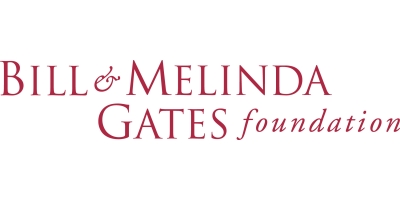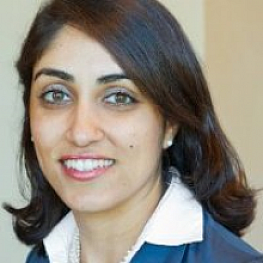Taking a Risk with Digital Finance: When Big Banks Leave Latin America & the Caribbean, Governments Leverage FinTech to Assist the Poor
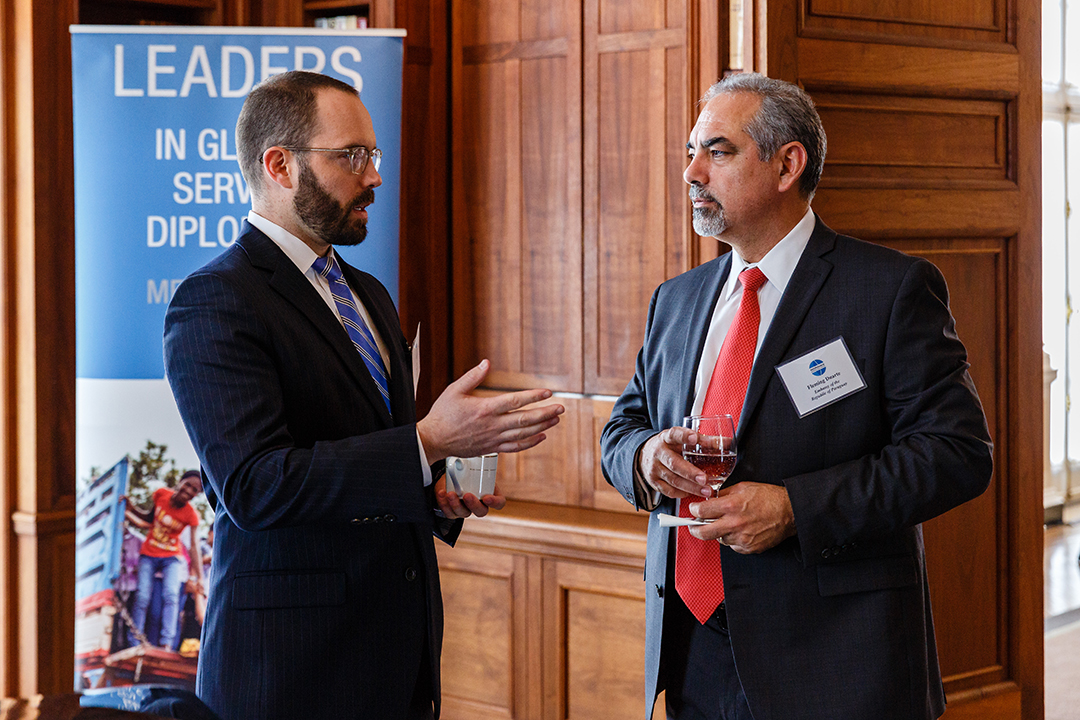
The final regional session of The Digital Finance Future: Inclusive and Global Economic Growth series took place on March 28, 2017, gathering over 30 representatives from foreign embassies, the business community, multilateral organizations, financial payment platforms, U.S. government and the social sector for a conversation on the benefits of digital financial services to governments in Latin America and the Caribbean. An emphasis was placed on poorer nations that have been negatively affected by stagnant financial flows due to perceived “risky” economic activity.
The session took place over two hours and was divided into two segments, each with three parts: the segments commenced with short speaker presentations, which framed simultaneous small-group discussions among attendees at their respective tables, and concluded with full-group recaps. The first presentation was led by Sonia Arenaza, Regional Lead for Latin America and the Caribbean of the United Nations-based Better Than Cash Alliance, who explained how governments could benefit from digitizing payments to citizens. The second speaker was Vijaya Ramachandran, a Senior Fellow of the Center for Global Development. She set the tone for the rest of the conversation, which centered around the role of digital finance in helping migrant workers primarily from poor countries overcome barriers imposed by strict anti-money laundering and counter-terrorism rules, and to transfer money in more secure and transparent ways.
How Finance Flows

In today’s increasingly globalized and digital economy, money flows in myriad ways. Among them, four financial flows are particularly important for advancing economic development and inclusion: trade, correspondent banking, humanitarian aid and remittances. The latter flow – remittances, or the money sent home by migrant workers in foreign countries – is of most concern to poorer nations that are fiscally dependent on large populations of their citizens working abroad.
Globally, remittances have overtaken any kind of foreign aid or financial assistance as being most critical to developing nations, according to Vijaya Ramanchadran. In fact, remittances flow into poor countries at 3 to 4 times the level of international aid. This is unsurprising given that global migration patterns over the past century have illuminated where the greatest financial opportunities lie. For countries in the Caribbean and Central America, which are fiscally dependent on remittances, these flows have a greater economic impact as more people continue to leave home for work elsewhere and send money back to loved ones.
Historically, migrant workers have used a number of means to send money back home. Formal financial channels like bank-to-bank transfers are the most secure means; however, a significant share of remittances flow through informal routes like Western Union or MoneyGram. Oftentimes people seek alternative methods because transfer fees are lower and/or the transaction is more convenient for either or both the sending and receiving parties. Globalization coupled with the rise of technology have helped to integrate domestic financial systems and allow for the emergence of new financial services in international markets. While governments have a harder time tracking remittances that flow through informal channels, public-private partnerships have facilitated in monitoring and reporting these financial movements – and though cash-based exchanges are almost entirely untraceable, they still have a significant economic impact.
In recent years, migrants have taken less secure measures to send money home, such as filling suitcases full of cash to move through airports or public bus and railway systems. This is largely a result of the recent de-risking or “de-banking” phenomenon, in which global financial institutions are increasingly terminating or restricting business relationships with remittance companies and smaller local banks in certain regions of the world. After the September 11 terror attacks and the 2008 economic crisis, the international finance community cracked down on money laundering and terrorism by designing a set of policies to regulate and trigger risky financial activities. They also began imposing burdensome fines on financial institutions in compliance. Since then, the number of fines has continuously increased. In 2014, the fines imposed on U.S. banks in violation of anti-money laundering rules totaled to $15 billion. This alone sends a chilling signal worldwide that if suspected of engaging ‘bad actors’, financial institutions could expect to receive large fines and risk driving away business.
Unfortunately, few banks or governments can accurately identify “bad actors” of nefarious investments or bank transfers. This is largely because the regulations around “risky” financial activities are unclear. One participant of The Digital Finance Future session shared how a $50 bank wire from Pakistan to the U.S. could trigger an investigation while a $10 million transfer from China could fly under the radar as “business as usual,” simply because of the different risk levels and triggers associated with the two countries.
What’s more, global regulating bodies like the Financial Action Task Force (FATF) in Paris use public shame tactics to deter violation of anti-money laundering and counter-terrorism rules. Specifically, FATF has created a grey list and black list of countries not following rules properly. As a result, these “listed” nations find it nearly impossible to make financial transactions or conduct business with the rest of the world – and fear tarnishing their reputations in the meantime. As discussed among The Digital Finance Future session participants, the perception of unreliability was of chief concern to the diplomats. One drew parallels to the release of the Panama Papers, which stained public perception of the country and raised concern in the government and business community about Panama’s economic stability and ability to compete in international markets.
How does this play into the global remittance sector? For countries on FATF’s lists or on financial regulators’ radars for having allegedly weak money laundering systems, remittance flows are stifled. In fact, many banks have pulled out of countries and regions entirely, refusing to do business with local banks or informal money transfer organizations in places where anti-money laundering and counter-terrorism rules are not strictly enforced. In 2011, U.S.-based Sunrise Community Bank closed all money transfer accounts doing business in Somalia. Several other banks followed suit and, by 2015, no one could send or receive remittances to the region, which was highly dependent on them as a primary source of income and aid. U.S. banks have also closed many correspondent bank accounts in Caribbean nations seen as lacking robust anti-money laundering rules. While de-risking is happening in pockets around the world, its effects are hitting the poorest regions the hardest.
The Great Finance Migration
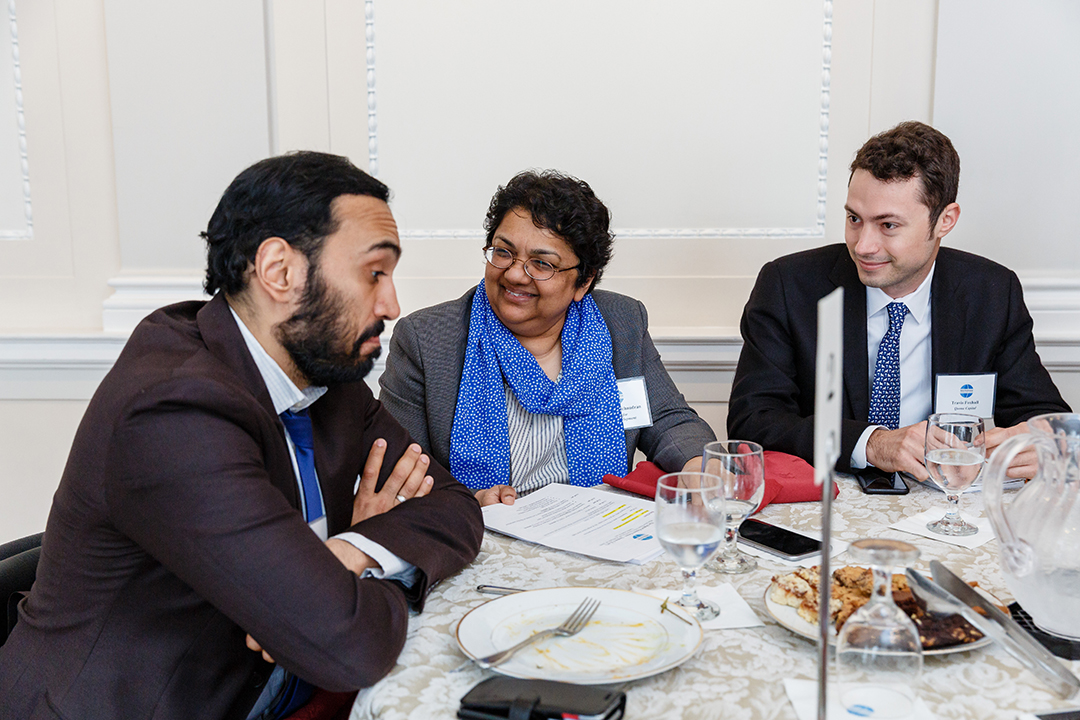
In the Caribbean and Central America, smaller countries with limited financial markets are particularly vulnerable to de-risking practices. As it relates to remittances, one consequence of de-banking money transfer organizations in these developing nations is the spike in use of informal channels by migrant workers sending money home. The more informal the money transfer mechanism, the harder it is for governments to trace remittance flows. From a money laundering or terror finance perspective, this is exactly what official financial institutions and banks do not want.
Attendees of The Digital Finance Future session explored some of the unintended consequences of de-banking in Latin American and the Caribbean. One diplomat referenced illicit drug trade in Central America to demonstrate how easy it is to move money outside formal financial institutions and still fly under the radar of regulatory bodies looking for exactly these types of risky behaviors. In support of this statement, another diplomat shared personal experience using the financial service Western Union to send money home; while Western Union charges a fee of around $8 USD, it does not require any security measures. For this reason in particular, informal platforms are used for money laundering and terror finance. At the same time, the low barriers to entry and convenience are also attractive to migrants who are undocumented and fear being ‘found out’ by formal financial systems.
At this juncture, participants examined the role of immigration policies in the economic inclusion of the poor. They discussed strategies to eliminate fear around, and lower barriers to, identification in order to increase undocumented workers’ access to financial services that facilitate remittances flows, which ultimately increase opportunities for better employment, education and health.
Discussants also examined what-if scenarios, including when migrant workers are injured and cease working, or when they face deportation. As such, the conversation emphasized a need to accelerate financial literacy and planning among remittance recipients so the funds have greater economic value and returns. A diplomat from a Central American nation shared how remittance recipients oftentimes use the money for consumption or basic expenses like food and utility bills, and other times as a reason to stop working and instead live off the earnings of the family member working abroad. Discussants imagined a future economy in which banks accept remittances as equity for a loan or as collateral for further investment in the poor’s own economic inclusion and mobility. At present, however, many policies and regulations ultimately handicap remittance recipients in poor, de-risked countries from utilizing these income streams to their full potential.
Another diplomat from Central America attributed the high cost of banking to the increasing shift toward informal finance – among foreign workers and everyday residents alike. In Colombia, banks charge monthly fees and, as a result, fewer and fewer people are using them. At the same time, people’s trust in banks declines as these formal institutions are seen as a ‘scheme’. Another diplomat explained how anti-money laundering reforms have made opening a bank account in many Latin American countries a tedious and undesirable process, often involving answering hundreds of questions and waiting an unreasonably long time for verification. Moreover, the strict rules around de-risking have placed more onus on all parties, including non-financial actors, involved with bank transactions to report suspicious financial activity. Even a car dealership is held accountable and could be penalized for circumventing legal mandates.
As public trust in formal financial institutions wanes, and more and more individuals and small businesses seek informal financial systems to skirt around strict rules, they take on risks themselves. They, however, see the risk as worth taking. From a security and regulatory perspective, the informal sector is less ideal but, at the end of the day, it affords poor populations a pathway to access financial systems. This illustrates the need to better understand how people use and access finance in order to reform the regulatory roadblocks to financial inclusion of the poor in de-risked countries.
Rebuilding Trust in the Formal Finance Sector

For governments and formal financial institutions to win back public trust, specifically in ‘risky’ and developing nations in the region, it is essential that they understand how their current and prospective customers use and access money. Discussants noted that traditional metrics like insurance, average monthly savings and credit scores are often not applicable to people in developing countries. As such, financial and government leaders can instead assess levels of access to and use of financial services by measuring whether people are better able to save, spend and borrow – without getting into demonstrably high debt. They also emphasized the importance of banks and governments surveying consumers to better understand their financial needs. Specifically mentioned how responsive people feel banks are to meeting their daily financial needs.
Participants reasoned that as governments and banks gain deeper, more nuanced understanding of consumers and their unique needs, they are better positioned to tailor everything from risk assessment to financial product offerings to specific customer types and groups. A focal point of the conversation was needing clearer definition and assessment of risk. For example, a tiered system of risk could help manage risk, rather than zero it out. Building on this concept, participants discussed assigning various transaction volumes to different levels of authentication; another idea was to separate institutions responsible for monitoring cash flows and remittances so these specific financial activities are monitored with discretion and specific nuances in mind. One diplomat shared how the lack of coordinated regulating of microfinances in Latin America and the Caribbean leaves gaps in ensuring that the unique needs of the beneficiaries are met – and measured.
A better understanding of small business needs could also help address the financial inclusion gaps within the sector, particularly in areas facing significant de-banking. Participants explored how digital services and FinTech could help generate more consumer data to better meet their needs and thereby restore trust in formal finance systems. Ideas ranged from employing digital identification systems to the digitization of government payments and tax collection processes in order to generate more country-level data around GDP growth.
In her presentation, Sonia Arenaza further demonstrated these benefits to governments by focusing on digitized payments to the poor. In many developing countries, the poor operate in a cash economy – for many of the reasons previously mentioned, including lack of documentation to access financial services or trust in the existing structures. With cash comes inefficiencies, including difficulties with printing, transporting and leakages. Theft and bribery are also common issues associated with cash-based markets. By moving in a digital direction, governments create more efficiencies and security for their citizens’ financial activities. Moreover, they gain trust and credibility when positioned as champions of innovation, particularly from an economic lens.
Digitizing government payments has emerged as a desirable approach to earning trust and mobilizing adoption of more formal – and digital – financial services among the poor. Payments are a daily activity that require no history or formal financial record. As such, governments are able to bring more people into the formal economy simply by transferring wages and social welfare payments through digital channels. This has an added benefit to domestic economic growth, given that government spending typically represents anywhere from 15-30% of a country’s GDP. From a gender lens, women gain significant economic agency by receiving wages directly to an account that they own and manage, which is increasingly transformative for women in cultures where male heads of households traditionally have control over all financial matters.
The conversation also explored how digital finance could help curb much of the corruption and bribery that happens in light of government inefficiencies. In particularly, participants discussed examples of successful government roll-outs of digital financial initiatives. In Mexico, the government centralized wages through the Treasury and then distributed ATM cards for workers to access their earnings. While reluctant at first, workers kept using the bank cards to check their account balance and, when they saw that no money was missing, over time they increasingly built trust in the system, which further encouraged them to use their accounts for other services like credit. In centralizing and digitizing wages, the Mexican government now saves $1.3 billion annually.
The Columbia Coffee Growers Federation has demonstrated how digital payments can also benefit entire collectives of individuals. In shifting payments to coffee growers from cash to smart cards, the Federation has saved, over a period of seven years, a total of $15 million, which was 80 percent of the original expenses in making cash payments. The federation has therefore saved $3.75 million since going digital – and every dollar has benefited the coffee growers directly.
While participants agreed that digital is a best path forward to rebuilding trust in finance, they acknowledged that cross-sector participation and collaboration must be at the heart of the effort. They specifically addressed the need for public-private alignment so that regulations keep pace with innovation, especially when there are benefits to both government and the consumer. Multi-sector networks like the Better Than Cash Alliance can be particularly helpful in aligning government interests in generating more formal economic participation and the tech industry’s push for FinTech. These financial inclusion consortiums can also serve as credible advocates for regulatory reform of anti-money laundering and counter-terrorism rules. Participants explored how diversity of stakeholders adds value and legitimacy to campaigns demonstrating how de-risking threatens progress achieved thus far on global financial inclusion.
Attendees representing free trade groups and countries within regional trading blocs offered examples of how governments and business sectors are already working together to advance a digital agenda. The Pacific Alliance, comprised of Chile, Peru, Mexico and Colombia, developed a working group on financial and digital integration, with a particular emphasis on private-sector engagement and collaboration for policy recommendations. This spurred deeper conversation on the role of trading blocs like the Pacific Alliance in helping illuminate the impacts of de-banking felt at the local and regional level, which according to one US Government representative often gets lost because the ‘inclusion nuances’ are not top priority for government leaders. Alliances – whether intergovernmental or cross-sector – help build accountability.
The Digital Opportunity for Business
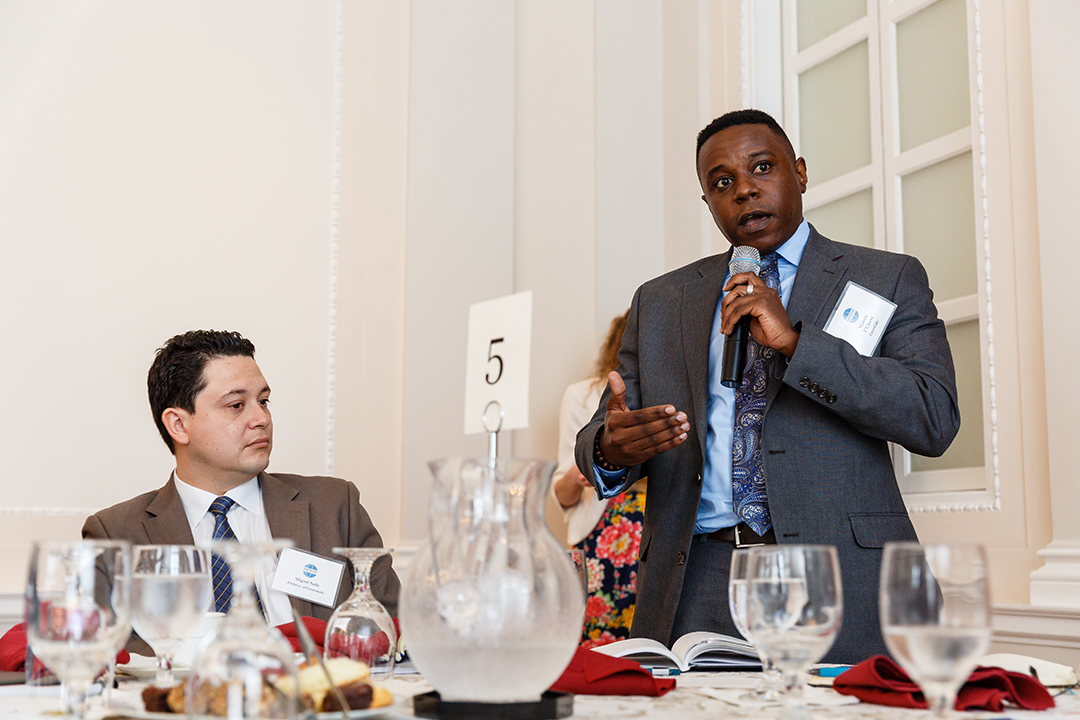
As governance and finance become increasingly digitized, the opportunities for private-sector leadership in advancing economic inclusion will continue to open. Participants recognized that governments are always slower to adopt, so entrepreneurs and innovators have to be the drivers in the future digital economy. To catalyze this, some suggested identifying low-hanging fruit within existing conditions. One example shared was Panama’s ratio of mobile phones to people, which is 2.5 to 1. Discussants hypothesized ways for banks, mobile app companies and FinTech leaders to take advantage of this reality. One suggestion was to target tech savvy youth of all socioeconomic levels to adopt digital financial services that have the added benefits of teaching them healthy financial behaviors.
Participants representing financial incubators and the wider business community shared examples of existing services such as Zoom and PaysaPay that are bridging the gap for individuals with limited access to formal financial services. As verified businesses, both Zoom and PaysaPay make payments to utility or telecom services on behalf of individuals. These innovations are particularly useful for those lacking documentation or for migrant workers trying to send remittances home to countries affected by tight de-risking rules. While alternatives to formal bank routes, these services nonetheless help the financially disadvantaged gain access and participate in the digital economy.
Thinking far into the future, some participants presented opportunities for blockchain to integrate with government policies around digital finance. The FinTech company BanQu is leveraging blockchain technology to create unique economic identifiers for the under-banked across geographies. Participants explored how this innovation could be helpful from regulatory reform perspective or for governments designing national digital identification systems. A majority of the discussants expressed needing a better understanding of blockchain before thinking about the integration and use of such technology in government.
While perspectives shared among participants reflected the very approach deemed essential to advancing a digital-first government and restoring trust in the formal financial sector, altruism hinges on its success. As one participant put it, digital finance is a double-edged sword that increases transparency – for better or worse, depending on the actors involved.
See More Photos
Project Partner
Participants
Project summary
| Taking a Risk with Digital Finance: When Big Banks Leave Latin America & the Caribbean, Governments Leverage FinTech to Assist the Poor | March 2017 | |
|---|---|
| Number of Attendees: | 33 |
| Regions: | Western Hemisphere |
| Countries: | Chile, Colombia, El Salvador, Guatemala, Haiti, Mexico, Panama, Paraguay, Pakistan, Tanzania |
| Impact Areas: | Business and Trade, Governance and Transparency, Security and Defense |
| Program Areas: | Diplomatic Engagement |
| Partners: | NGOs |
